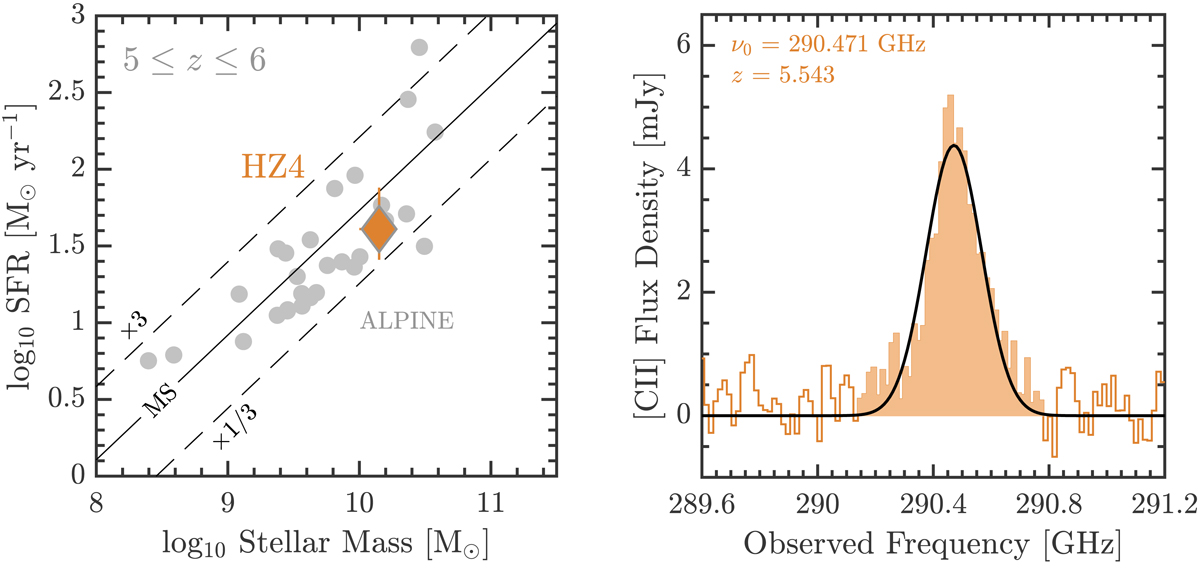Fig. 1.

Left: star formation rate – stellar mass plane between 5 ≤ z ≤ 6 showing the position of the main sequence of star-forming galaxies (black line; Speagle et al. 2014) and the z ∼ 5 galaxies with [C II] detections in the ALPINE survey (gray circles; Le Fèvre et al. 2020; Faisst et al. 2020). HZ4, shown as an orange diamond, lies only ∼0.2 dex above the main sequence and can be considered a typical star-forming galaxy at this redshift (Faisst et al. 2020). Right: continuum-subtracted [C II] 158 μm spectrum of HZ4 extracted inside a circular aperture of 0.9″ radius (∼5.4 kpc). The best Gaussian fit is centered at an observed frequency of ν0 = 290.471 GHz, which corresponds to a redshift of z = 5.54.
Current usage metrics show cumulative count of Article Views (full-text article views including HTML views, PDF and ePub downloads, according to the available data) and Abstracts Views on Vision4Press platform.
Data correspond to usage on the plateform after 2015. The current usage metrics is available 48-96 hours after online publication and is updated daily on week days.
Initial download of the metrics may take a while.


